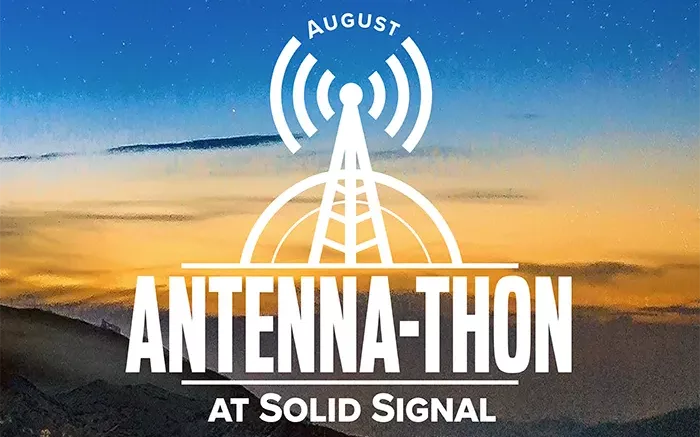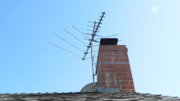Here’s the dirty little secret: sometimes it isn’t. It’s important that you choose an antenna that’s powerful enough for your needs, but once you get to that point, more power isn’t going to help you. That’s why our professional antenna technicians sometimes recommend two different antennas for the same situation. There are actually times where it doesn’t matter which one you choose, and if the prices and other specs are similar, sometimes there really can be two different “right choices.”
What makes the “right choice?” Let’s take a look at why you would choose one antenna over another.
UHF-only vs. UHF/VHF
This is the biggest mistake people make when choosing an antenna. Less expensive antennas often only pick up UHF stations, and most people have at least one VHF channel in their markets. A lot of inexpensive or small antennas are UHF-only. Look at the fine print to see if the antenna you want is marketed as a UHF/VHF antenna. It may also give a channel range. If the antenna is rated to receive channels 7-13, that’s a UHF/VHF antenna.
Raw Gain
Sometimes called “unamplified gain” this is the measure of how well an antenna does at picking up signals. It’s measured in dB and is actually telling you how well your antenna does compared to some sort of standard. It’s important to measure this before amplification because digital signals don’t necessarily benefit from amplification the way analog ones do. Many amplified antennas only list amplified gain. This isn’t a true measure of how well it’s picking up signals.
Signal to Noise Ratio
All electronics add noise, and there’s always going to be some sort of electronic component to an antenna. If you are going to have an amplified antenna, it’s important that the electronics add as little noise as possible. It’s actually possible with digital signals for an amplified antenna to perform worse than an unamplified one if the electronics are noisy enough. With digital signals, the only thing that’s really important is that the tuner inside the TV can tell the signal from the background noise. If you add more signal but also add more noise, you’re doing yourself no good.
Range vs. Beam Width
The difference between our Televes DATBOSS LR Mix and Televes Ellipse Mix antennas is that the LR version can actually pull in stations that are further away. It does this the old-fashioned way, by being bigger. That means more raw gain. However, in order to keep the antenna at a reasonable size, it’s also engineered to look at a smaller portion of the sky. That’s what’s called “beam width.” The LR antenna can look at a chunk of the sky a little more than half as large as the non-LR version. If you need to get those distant stations, you won’t care, but if you don’t, you may actually be getting worse performance because you won’t pull in stations from odd angles.
Get the antenna you need
When you shop for antennas at SolidSignal.com, you’ll see there are a lot of antennas with similar gain numbers, so you have to look at the other factors. Do you need amplification? Usually you only need that if you’re powering multiple TVs. Do you need a compact antenna that fits in with HOA rules? Do you want an antenna that will stand up for years, or are you only thinking you’ll use it for a year or two? The good news is no matter which antenna you choose it’s probably going to give you some channels, but choose carefully and you’ll get all the channels you want.
Not sure which antenna to pick? Give us a call! We’re here for you during East Coast business hours. Call us at 888-233-7563. If it’s after hours, fill out the form below. We’ll get back to you, usually within one business day.





